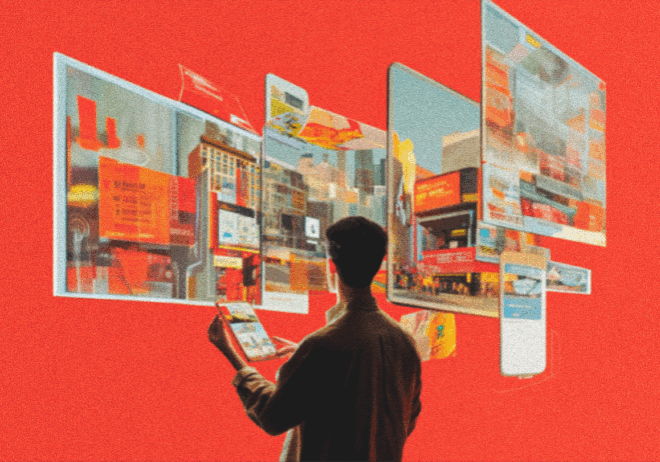
Lowest Price vs. Brand Loyalty: Where Do Consumers Stand?
The tug-of-war between price and brand loyalty is as old as commerce itself.
For decades, businesses have worked to build strong relationships with customers, fostering loyalty through quality products, excellent service, and compelling brand stories. But in a world where consumers can compare prices in seconds and discounts are everywhere, is loyalty enough?
Or does the lowest price always win?
The power of price in retaining brand loyalty
Let’s state the obvious: price matters—a lot. With rising inflation, economic uncertainty, and an ever-growing number of shopping options, many consumers prioritize cost over brand loyalty.
The ability to instantly compare prices online means shoppers are more informed than ever, and businesses are forced to fight harder for attention. Research consistently shows that price remains one of the most critical factors in consumer decision-making.
Why? Because the tools to find the best deal are everywhere.
- E-commerce platforms like Amazon and Walmart offer price comparisons at a glance.
- Price-tracking browser extensions like Honey and CamelCamelCamel alert shoppers to the best buying time.
- Retail apps and loyalty programs constantly push exclusive deals and flash sales.
When convenience meets affordability, price-driven shopping habits become the norm.
The industries where price wins out over branding
Certain industries feel the impact of price sensitivity more than others.
- Electronics: With tech evolving quickly, shoppers hunt for discounts on laptops, smartphones, and accessories, often switching brands based on deals.
- Apparel: Fast fashion has conditioned consumers to expect frequent discounts, making brand loyalty difficult to maintain.
- Grocery & Household Goods: Price fluctuations in everyday essentials mean many shoppers prioritize cost over sticking with a favorite brand.
For these categories, loyalty can be fleeting, as consumers are often willing to sacrifice brand familiarity for savings.
The staying power of brand loyalty
Despite the appeal of lower prices, brand loyalty is far from dead. Many consumers still develop strong attachments to brands based on trust, consistency, and emotional connections. This is particularly true for older generations, such as Baby Boomers and Gen X, who have been shopping with certain brands for decades.
What drives brand loyalty?
Beyond just familiarity, several key factors keep customers coming back:
- Quality & reliability: A trusted product experience keeps customers loyal. Apple, for example, maintains strong brand allegiance despite competitors offering cheaper alternatives.
- Customer service: Brands known for exceptional service (think Nordstrom, Zappos, and Chick-fil-A) often retain customers even with higher prices.
- Brand values & ethics: With sustainability and social impact becoming major concerns, consumers are increasingly drawn to brands that align with their values. Patagonia and TOMS have built customer loyalty through ethical business practices.
- Status & exclusivity: Luxury brands like Rolex, Louis Vuitton, and Tesla thrive on loyalty by offering an aspirational lifestyle that price alone cannot replace.
- Convenience & ecosystem lock-in: Subscription services (Amazon Prime, Netflix, Peloton) and product ecosystems (Apple, Microsoft) make staying easier than switching.
Industries where brand loyalty prevails
Some markets naturally foster strong customer attachment, making it harder for price alone to dictate purchasing decisions:
- Luxury Goods: High-end fashion, watches, and cars thrive on exclusivity and brand heritage.
- Skincare & Beauty: Trusted products (like Estée Lauder Fenty Beauty) create repeat customers who are reluctant to experiment.
- Automotive: Many consumers stick with brands like Toyota or Ford due to reliability and familiarity.
- Specialty Foods & Beverages: Some coffee lovers remain loyal to Starbucks despite cheaper alternatives.
For brands in these categories, loyalty is a powerful asset that price competition alone cannot easily disrupt.
The modern consumer’s dilemma: Price vs. loyalty
In reality, most consumers don’t fall into a strict “price-first” or “loyalty-first” mindset. Instead, they make situational trade-offs based on perceived value. Take this common example: a shopper might always buy Nike sneakers because they trust the quality and brand, but when it comes to everyday essentials like laundry detergent, they’ll grab whatever is cheapest. This selective loyalty means that brands must compete both on price and value, depending on the category.
When consumers stick with a brand
- High-involvement purchases (electronics, skincare, luxury items)
- When the product quality is noticeably better (Apple, Dyson, Bose)
- When loyalty programs provide strong incentives (airline miles, Starbucks Rewards)
- When brand identity aligns with personal values (sustainability, social justice, inclusivity)
When price wins
- Commoditized products (groceries, household goods, generic medicine)
- When discounts and promotions are available (seasonal sales, coupons, flash deals)
- When switching brands has minimal consequences (gas stations, over-the-counter painkillers)
For brands, understanding where they stand in this equation is critical.
How brands can win: Balancing price and loyalty
The most successful brands understand that loyalty isn’t guaranteed, but neither is price dominance. The key is offering a value proposition that blends both affordability and brand trust.
1. Deliver exceptional customer experience
People are often willing to pay more for a seamless, positive experience. This includes:
- Hassle-free returns
- Personalized recommendations
- Friendly and efficient customer service
Amazon, for example, keeps millions of customers loyal through low prices, convenience, and fast delivery.
2. Be consistent in quality
A strong reputation for reliability and performance can justify a higher price. Brands like Toyota and Apple maintain loyalty by consistently delivering on their promises.
3. Leverage emotional & social connection
Consumers want to feel connected to the brands they support. Successful companies foster community through:
- Storytelling (Nike’s inspirational marketing campaigns)
- Social responsibility (TOMS’ “One for One” giving model)
- Brand identity (Harley-Davidson’s rebellious image)
4. Use smart pricing strategies
Rather than engaging in price wars, brands can use strategic promotions to attract cost-conscious consumers while maintaining value perception:
- Loyalty rewards (Starbucks Rewards, Sephora Beauty Insider)
- Bundling & subscriptions (Apple One, Amazon Subscribe & Save)
- Limited-time offers (Black Friday, seasonal discounts)
These tactics allow brands to compete on price without eroding long-term value.
Cut to the chase
Price will always matter, especially in commoditized markets and among budget-conscious shoppers. But loyalty still holds power, particularly in high-involvement purchases and for brands with strong emotional connections. The brands that adapt and find ways to provide both value and trust will be the ones that thrive. So, what wins in the end—the lowest price or brand loyalty? For most consumers, the answer is both.

